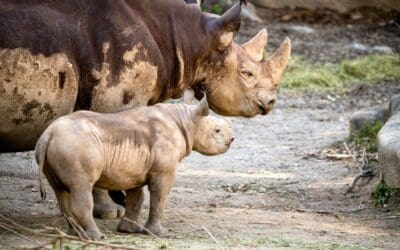
Creating your own zoo adventure can be a fun and educational experience for kids of all ages. A zoo adventure allows children to learn about different animals and their habitats in an interactive way. With the right resources and planning, kids can create their own zoo and embark on a wild learning experience.
One way to create your own zoo adventure is by utilizing the resources provided by your local zoo or botanical gardens. Many zoos offer custom education programs that cater to the specific interests and needs of your group. These programs can be tailored to fit any age group and cover a variety of topics such as animal behavior, conservation, and ecology. By working with your local zoo, you can create a personalized zoo adventure that is both engaging and informative.
Another way to create your own zoo adventure is by using your imagination and creativity. With some craft paper, blocks, and animal toys, kids can build their own zoo and populate it with their favorite animals. This pretend play activity allows children to explore their creativity while also learning about different animals and their habitats. By encouraging kids to use their imaginations, you can help them develop a lifelong love for animals and the natural world.
Understanding Zoos
What is a Zoo?
A zoo is a place where animals are kept for public display. Zoos are designed to provide a safe environment for animals to live and thrive. They are also intended to educate the public about different species of animals and their behavior. Zoos can be found all over the world and can range in size from small local zoos to large national zoos.
Types of Animals in a Zoo
Zoos typically have a wide variety of animals on display. Some common animals found in zoos include lions, zebras, and penguins. However, zoos can also have a variety of other animals such as elephants, giraffes, and monkeys. In addition to displaying animals, zoos also work to conserve and protect endangered species.
When animals are brought to a zoo, they are given a carefully crafted environment that is designed to meet their specific needs. This includes providing proper nutrition, shelter, and medical care. Zoos also work to create environments that are similar to the animals’ natural habitats to ensure their comfort and well-being.
Overall, zoos play an important role in educating the public about different species of animals and their behavior. They also work to conserve and protect endangered species while providing a safe and comfortable environment for animals to live and thrive.
Creating Your Zoo Blueprint
Designing a zoo can be a fun and exciting adventure for kids. Creating a blueprint is an essential step in the process of building your own zoo. In this section, we will guide you through the process of creating a blueprint for your zoo.
Choosing Your Animals
The first step in creating your zoo is choosing the animals you want to include. It is important to consider the habitat and environment of each animal to ensure they are healthy and happy. Some popular animals to include in your zoo are lions, zebras, and penguins.
When selecting animals, it is important to research their habitat and environment. For example, lions need a large habitat with plenty of space to roam, while penguins require a habitat with water and a cold climate. Consider the needs of each animal before making your final decision.
Designing Animal Habitats
Once you have chosen your animals, it is time to design their habitats. Each animal requires a unique habitat that meets their specific needs. Lions, for example, need a large space with plenty of shade and hiding places. Zebras require a large grassy area to roam and graze.
When designing animal habitats, consider the natural environment of each animal. Incorporate plants and water features to create a natural environment that is both beautiful and functional. It is also important to consider the safety of both the animals and visitors.
Planning Space for Visitors
In addition to animal habitats, it is important to plan space for visitors. Visitors need a clear path to navigate the zoo and access each animal habitat. Consider adding educational displays and interactive exhibits to enhance the visitor experience.
When planning space for visitors, it is important to consider the flow of traffic. Ensure that visitors can easily navigate the zoo without getting lost or confused. Consider adding rest areas and food vendors to make the visit more comfortable.
In conclusion, creating a blueprint for your own zoo is an exciting adventure for kids. When designing your zoo, remember to choose animals with care, design habitats that meet their needs, and plan space for visitors. With a little research and planning, you can build your own zoo that is both beautiful and functional.
Building Your Zoo Model
Creating a model of your zoo is a fun way to bring your imagination to life. Here are some tips on how to build a zoo model that will make your adventure more exciting.
Making Animal Models
One of the most important parts of your zoo model are the animal models. You can make these using a variety of materials such as clay, paper mache, or even recycled materials. Here are some ideas on how to create animal models:
- Use clay to mold and shape your animals. You can paint them once they are dry.
- Create paper mache animals by using balloons as a base. Cover them with newspaper and glue mixture, and paint them once they are dry.
- Use recycled materials such as cardboard, plastic bottles, and egg cartons to create your animals.
Constructing Habitats
The habitats of your animals are just as important as the animals themselves. You want to make sure they have enough space to move around and live comfortably. Here are some tips on how to construct habitats:
- Use cardboard boxes to create the basic structure of the habitat. Cut out windows and doors as necessary.
- Use natural materials such as twigs, leaves, and rocks to create a more realistic environment.
- Add water features such as ponds or streams to habitats that require them.
Adding Visitor Areas
Your zoo model should also include areas where visitors can observe the animals. Here are some ideas on how to create visitor areas:
- Use popsicle sticks to create benches or viewing platforms.
- Create paths or walkways using construction paper or cardboard.
- Add trees and plants to create a more natural environment.
By following these tips, you can create a realistic and exciting zoo model that will make your adventure even more fun. Don’t forget to name your zoo and label the animals and habitats!
Incorporating Educational Elements
When visiting a zoo, there is more to see than just animals. Zoos offer a unique opportunity for students to learn about a variety of educational topics. Here are a few ways to incorporate educational elements into your zoo adventure.
Learning About Animal Habitats
One of the most important things to learn about animals is their habitat. Zoos often have animals from different parts of the world, allowing students to learn about various ecosystems. Before visiting the zoo, students can research the habitats of the animals they will see. During the visit, they can take note of the different environments and see how the animals interact with their surroundings.
Math in Zoo Planning
Planning a zoo adventure can be a great way to incorporate math skills. Students can use math to plan their route through the zoo, calculate the distance between exhibits, and estimate the time it will take to see everything. They can also practice counting and measuring by keeping track of the number of animals they see and their sizes.
Language Arts Through Zoo Stories
Zoos offer a great opportunity for students to practice language arts skills. Before visiting the zoo, students can read books about animals and their habitats. During the visit, they can observe the animals and create stories about them. After the visit, they can write about their experiences and share their stories with classmates.
Incorporating educational elements into a zoo adventure can make the experience even more meaningful for students. By learning about animal habitats, practicing math skills, and using language arts to tell stories, students can gain a deeper understanding of the natural world.
Collaboration and Sharing
Working Together on Your Zoo
Creating your own zoo adventure can be a fun and engaging way to learn about animals and their habitats. However, it can be even more exciting when you work together with others. Collaborating with friends, classmates, or family members can help you generate new ideas and perspectives that you may not have thought of on your own.
If you are a student, consider working with your classmates to create a shared zoo adventure. You can divide the work among yourselves, with each person responsible for researching and designing a different exhibit. This approach can help you learn from each other’s strengths and weaknesses and can result in a more comprehensive and diverse zoo experience.
If you are a teacher, consider incorporating a group project into your curriculum that involves creating a zoo adventure. You can assign groups of students to work together to research and design their exhibits, and then have them present their zoo to the class or to other groups. This can help foster teamwork and collaboration skills, as well as encourage creativity and critical thinking.
Presenting Your Zoo to Others
Once you have created your zoo adventure, it can be rewarding to share it with others. This can be done in a variety of ways, depending on your audience and resources.
If you are a student, consider presenting your zoo to your classmates, parents, or other family members. You can create a slideshow or poster presentation that showcases your exhibits and explains the animals and habitats you have chosen to include. You can also consider hosting a mini-zoo event, where you set up your exhibits in a designated area and invite others to come and learn about your zoo.
If you are a teacher, consider hosting a class-wide zoo event, where each group presents their exhibits to the rest of the class. You can also consider inviting other classes or schools to attend and learn about your zoo. This can help promote collaboration and sharing among students, as well as foster a sense of community and engagement in learning.
In conclusion, collaborating and sharing your zoo adventure can enhance your learning experience and provide opportunities for teamwork and creativity. Whether you are a student or a teacher, there are many ways to incorporate collaboration and sharing into your zoo adventure project.
Conclusion
Creating your own zoo adventure can be a fun and educational experience for kids. By following the steps outlined in this guide, you can learn about different types of animals, their habitats, and what they need to thrive.
Remember that building your own zoo is not just about creating a fun experience for yourself, but also about creating a safe and healthy environment for the animals. It is important to research and understand the needs of each animal before adding them to your zoo.
You can also use this opportunity to learn about conservation efforts and ways to protect animals in the wild. By educating yourself and others, you can make a positive impact on the world around you.
In conclusion, creating your own zoo adventure is a great way to learn about animals, their habitats, and how to care for them. With proper research and planning, you can build a safe and enjoyable environment for both you and the animals. So go ahead and start building your own zoo today!






